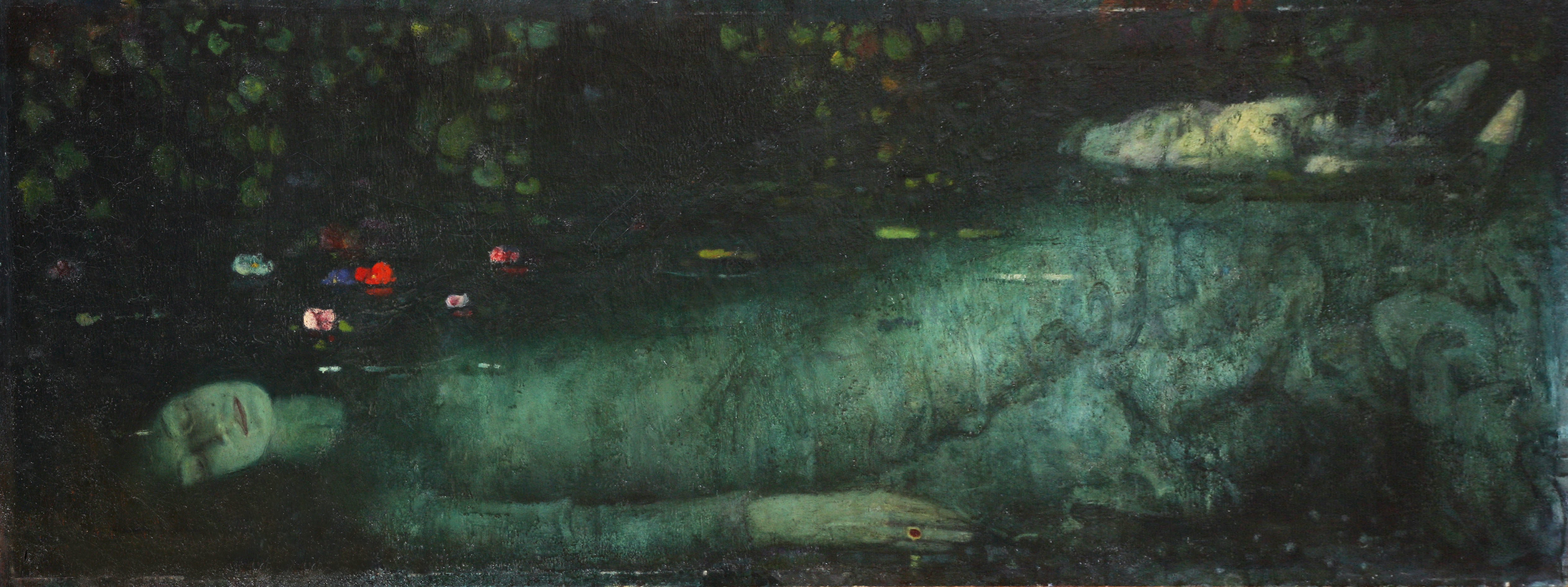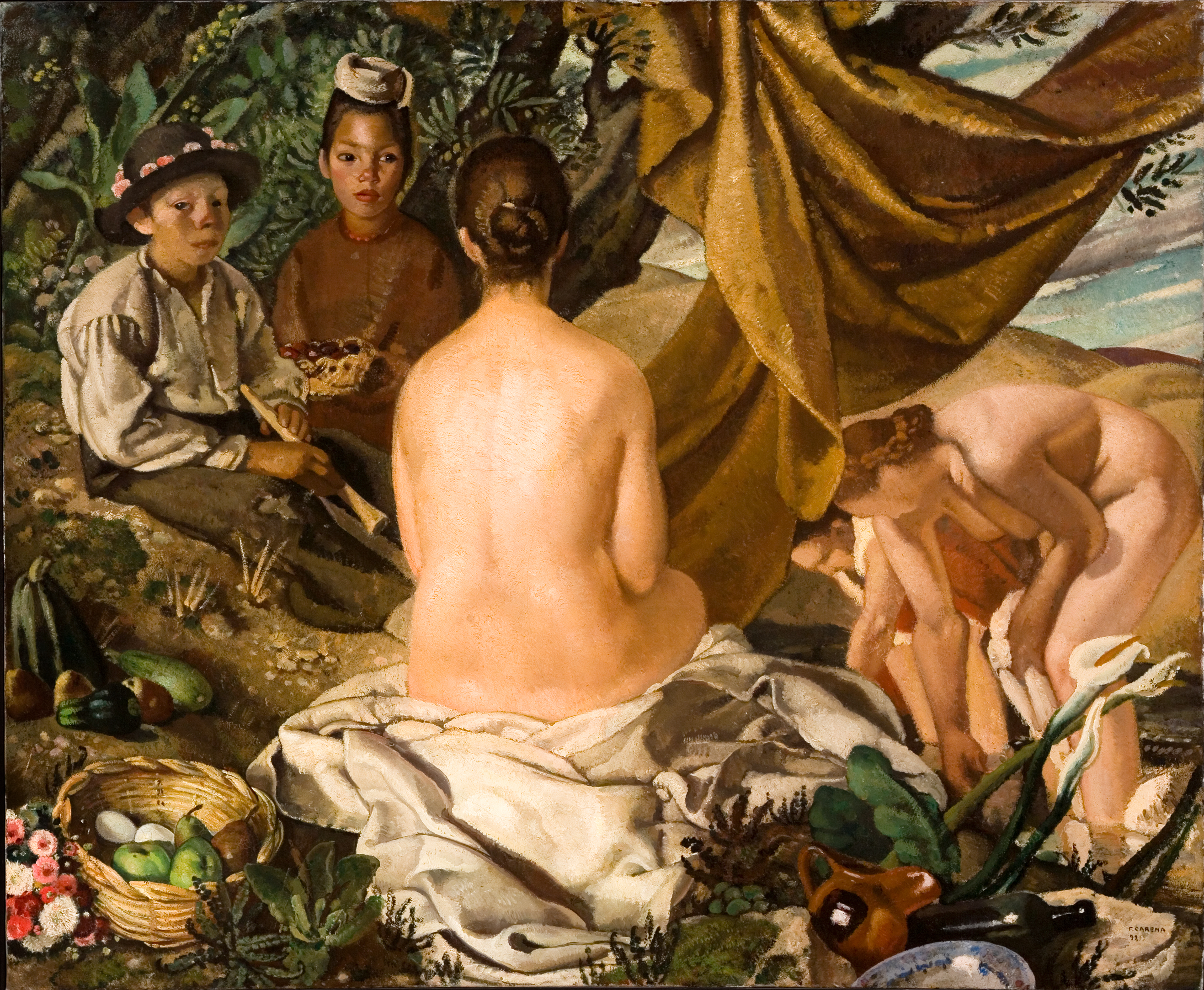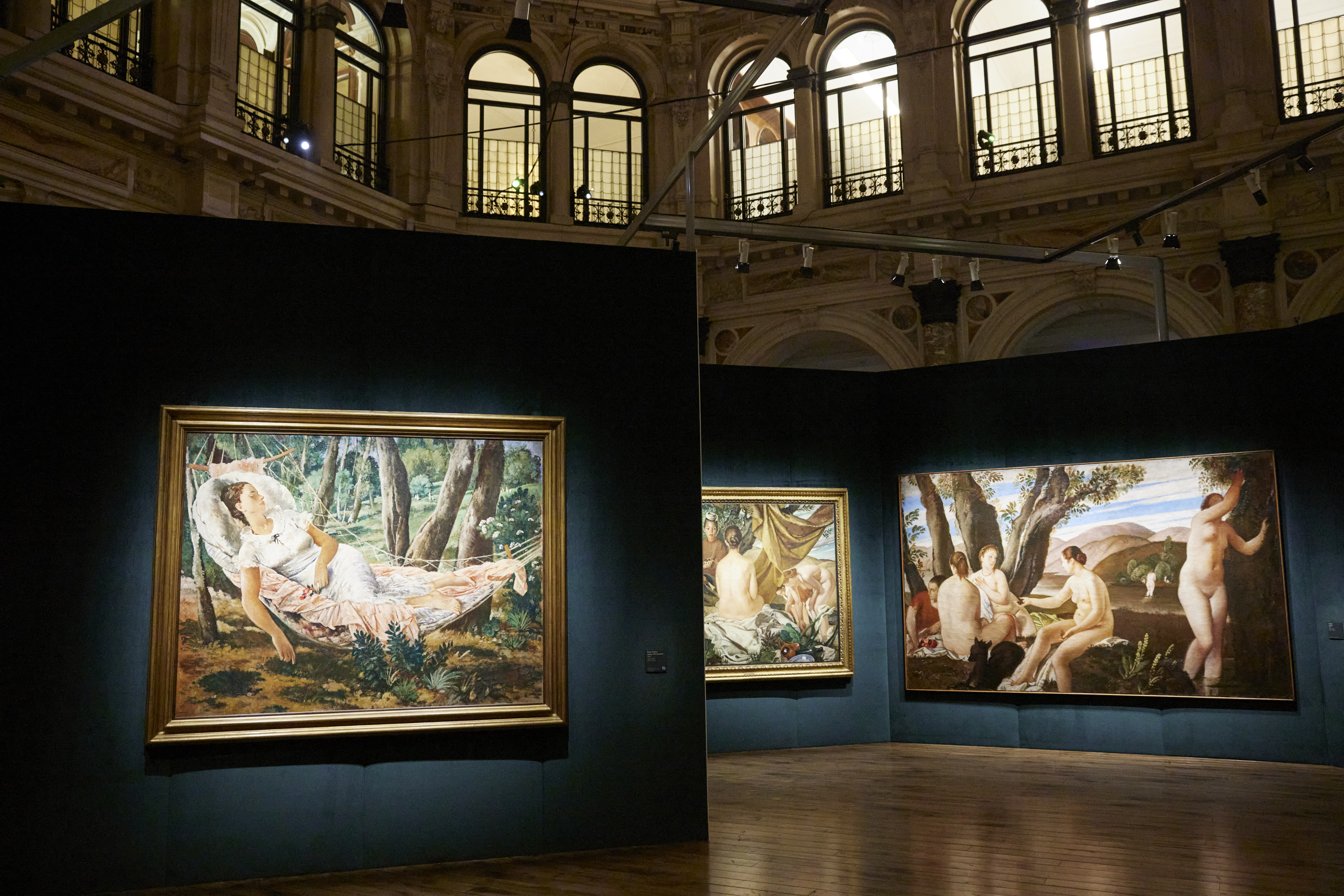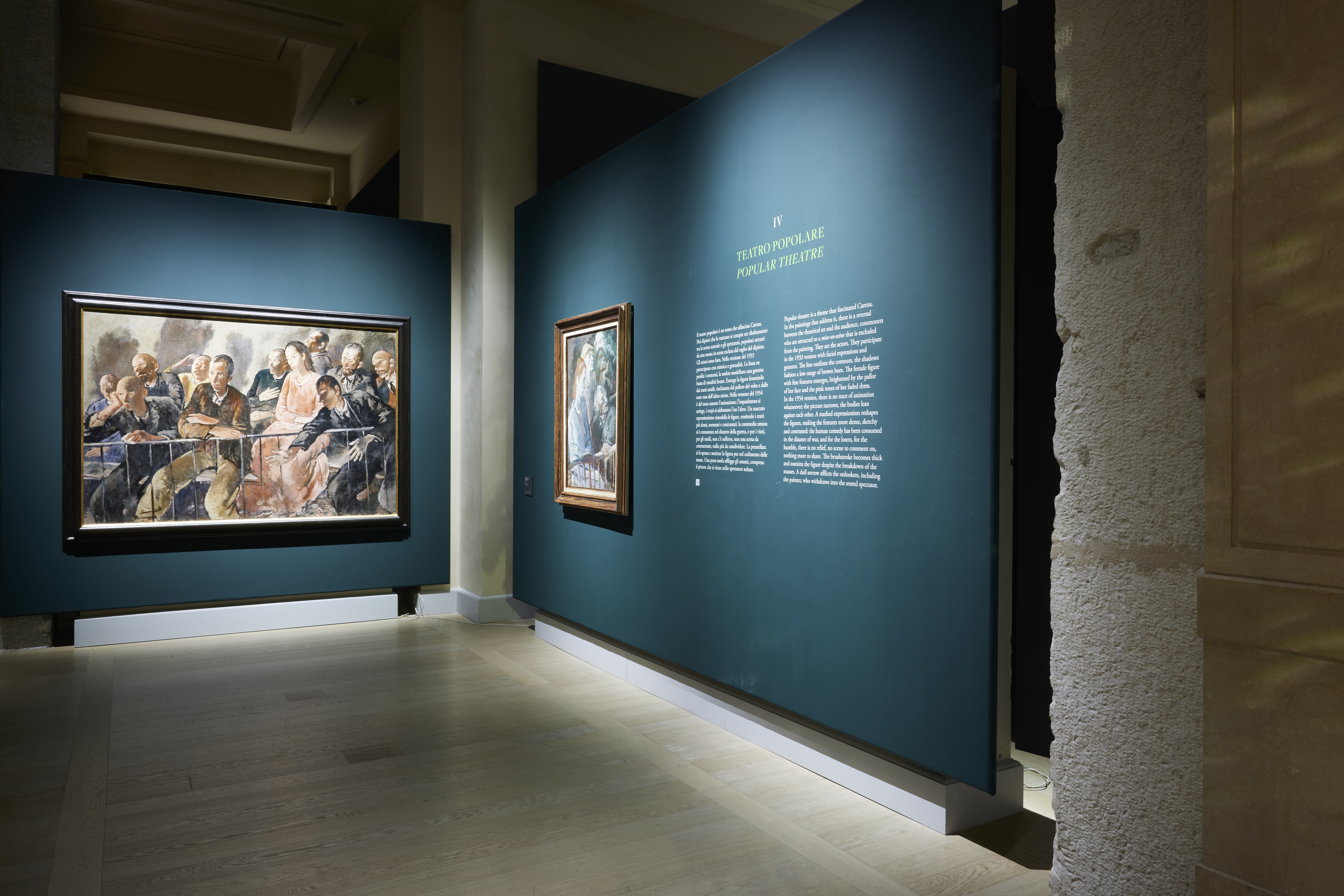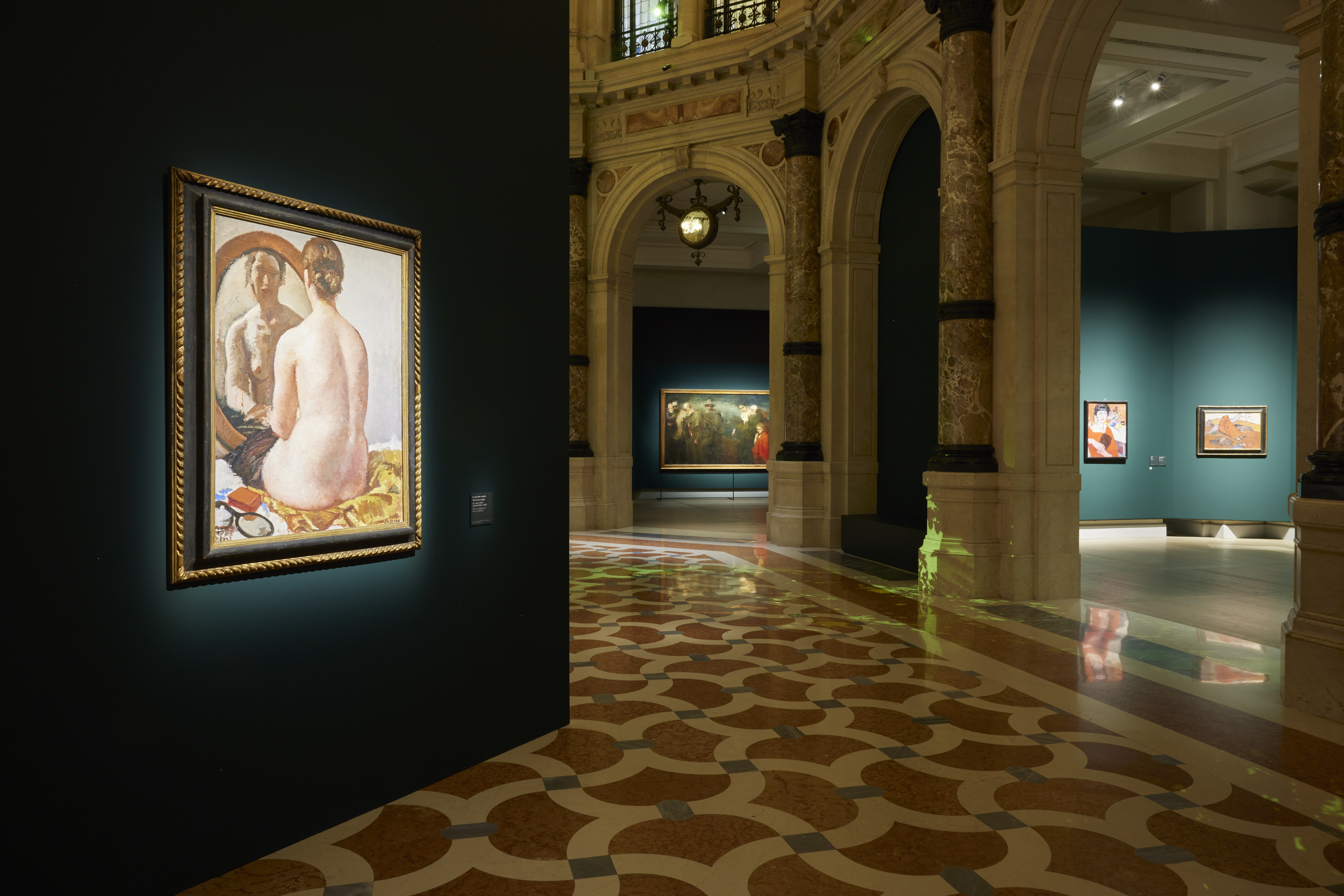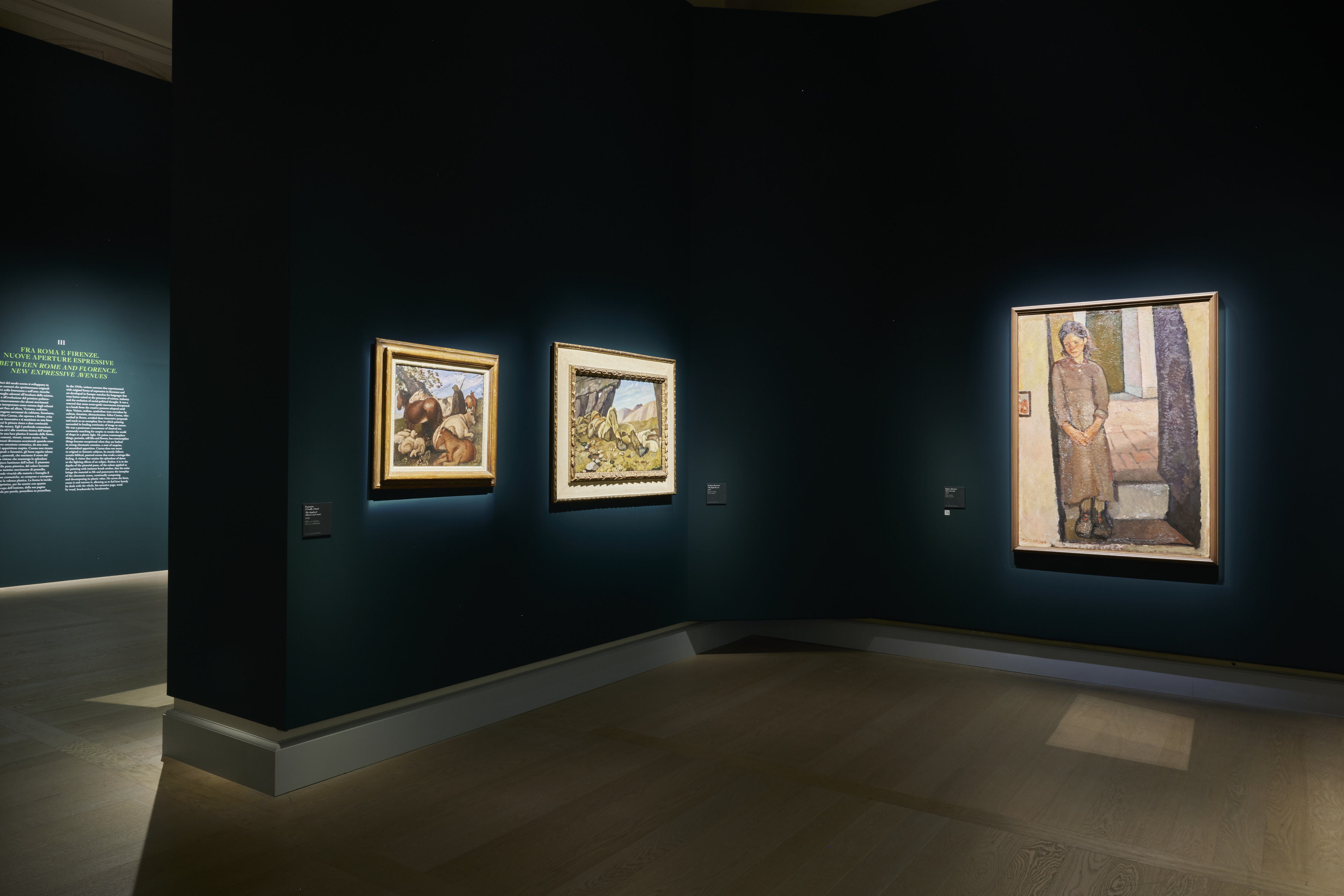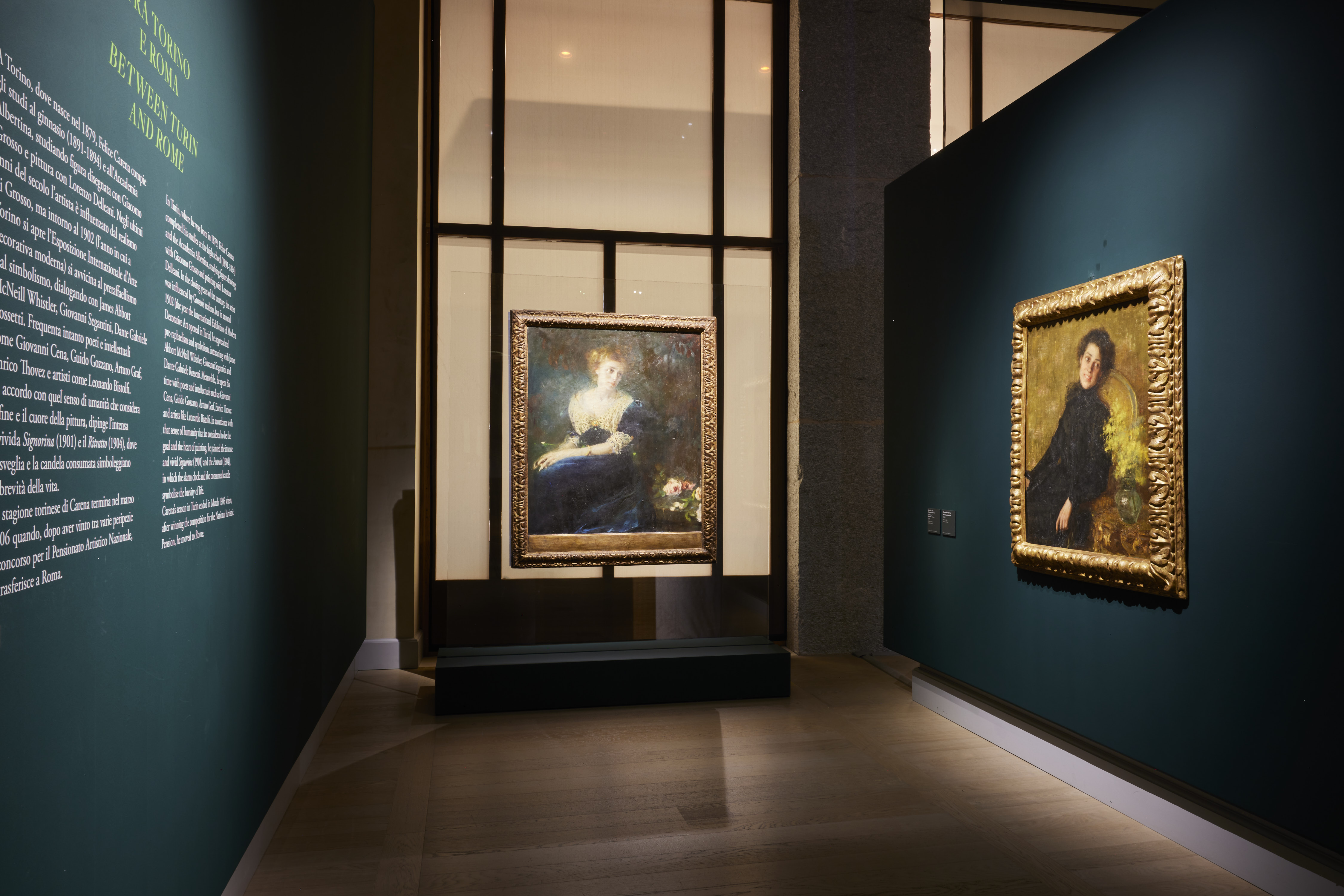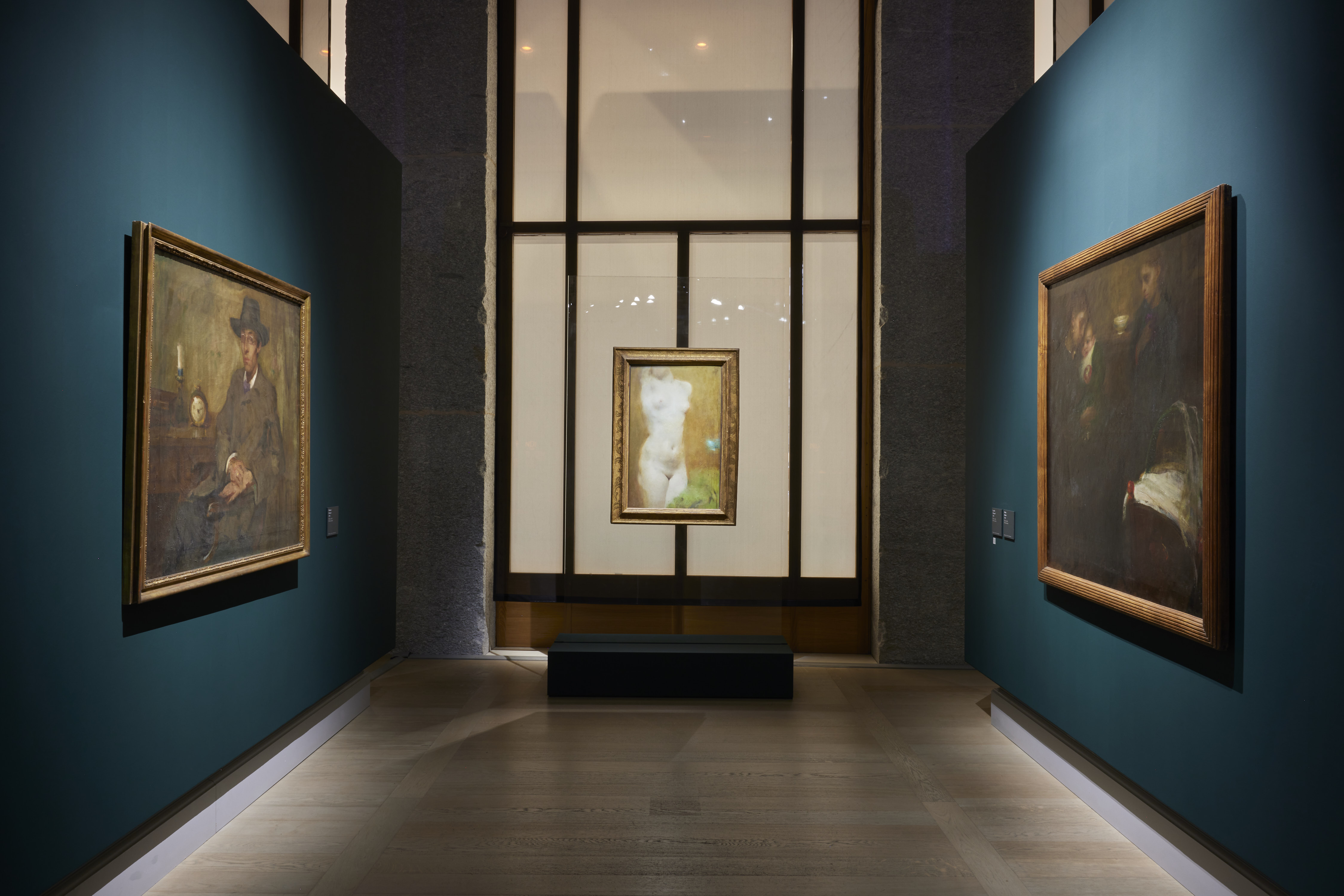Felice Carena (Turin, 1879 - Venice, 1966) trained at the Albertina Academy of Turin as a pupil of Giacomo Grosso. Initially interested in secession and symbolist works, after travelling to Paris during his years at the Academy he became fascinated by the works of Courbet. After winning the Pensionato Artistico Nazionale prize in 1906 with the painting La Rivolta, he moved to Rome and in 1910 was given his own room at the Amatori e Cultori exhibition. In 1912 he exhibited at the Venice Biennale, while in 1913 he was part of the organizing committee of the 1st Roman Secession and was attracted by the paintings of Cézanne and Matisse. Meanwhile, his creative and expressive qualities were widely appreciated by critics.
After fighting in the First World War, where he was appointed as an artillery officer, he moved to Anticoli Corrado, a fervid artistic environment that would influence his thematic and formal choices. Between 1922 and 1924 he held an art school together with sculptor Attilio Selva at the Orti Sallustiani. Its classes were attended by Emanuele Cavalli, Giuseppe Capogrossi and Fausto Pirandello, among others.
In 1924 he was appointed to teach at the Florence Academy of Fine Arts. Carena never deviated from his solid figurative approach, evolved from symbolist models and his esteem for Cézanne and Gauguin. As such, he never sought to reverse his stylistic development, continuing on his path by adding weight and a wealth of classical references to his compositions which would gradually also display an expressionist component with a strong spiritual and religious dimension.
From 1924 to 1944 Carena remained in Florence as chairman of the Academy, a period of great international prestige for the institution. After the War, the changing political and social scene took him to Venice where, in the intimate confines of his studio and in his revisitation of the great 16th17th century classical models, he fulfilled his ambition of bringing out the light in matter. Felice Carena died in Venice in 1966.


